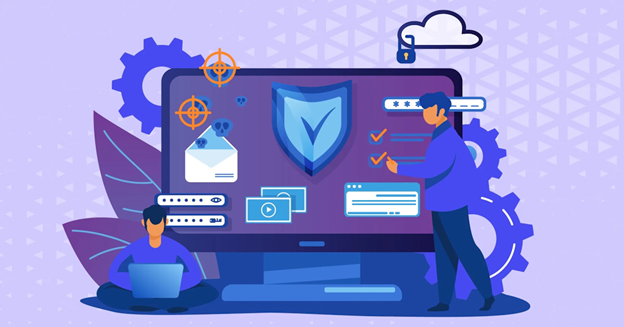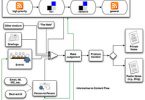In a world where technology and all aspects of our lives are increasingly integrated, security in software development services has not been an option and has become an urgent need
Imagine a house built by you. Would you leave the doors open and the windows unlocked? Of course not. So why treat the software that handles your business’s vital information any differently?
Security in software development is a robust lock system that protects sensitive digital information from intruders. Join us on this journey to discover how you can harden your software from the core with recommendations from OWASP experts.

What is Secure Software Development?
Secure development is not simply a feature or add-on; It is a comprehensive philosophy. It consists of the implementation of practices, processes, and decisions that guarantee the security of the software in each phase of its development.
From design concepts to deployment and maintenance, every step is important to ensure the software is resistant to attacks and vulnerabilities.
This is why projects like the “ Open Web Application Security Project” or OWASP with the Top 10, which is a non-profit that works to improve software security, were born and created a list of major vulnerabilities in web applications in the 19th century. Next, let’s look at some recommendations cited by computer security experts.
The 5 Best Practices and Strategies for Software Development According to OWASP
1. Rigorous Access Control
Access decisions should be based on a permissions model, rather than based on exclusions.
This means adopting a “ Zero Trust ” approach, where access is only granted when certain pre-established conditions are met. Thus, the system must be designed to automatically deny access to any user who cannot explicitly verify their authorization.
Ensuring that each user has access only to the resources they need for their tasks is a key strategy to avoid breaches in the weakest link in the chain (end users). This limits the potential damage in the event of a security breach.
2. Password and Authentication Management
Passwords, although they are a common element to protect security, represent a vulnerability, especially in cases where users use weak or predictable passwords for hackers, for example: “name123”.
This has led to the widespread adoption of multi-factor authentication. However, passwords are still essential and should be required to access all resources except those designated as public.
OWASP recommends key practices to minimize risks, including:
- Store only cryptographic hashes of passwords, rather than plain text passwords.
- Ensure that only the application can write to the table or file that contains passwords and keys.
- Require long and complex passwords to counter common attacks.
- Block access after multiple failed login attempts.
However, in the not-too-distant future, passkey technology promises to eliminate passwords in favor of methods such as biometric authentication, PINs or patterns on Android devices.
This is why custom software development company and other businesses must establish the best strategy for implementing strong authentication systems that protect user credentials and identity.
3. Secure Session Management
The duration of the sessions should be optimized to be as short as possible, maintaining an ideal balance between the security demands of the system and the convenience of the user or client. This measure is essential to minimize the risk of exposure to security threats.
It is crucial to implement tokens in session management for critical operations on the server, especially sensitive tasks such as user account management.
These tokens are essential to strengthen security, as they offer effective protection against Cross-Site Request Forgery (CSRF) attacks, thus ensuring an additional layer of defense in session management.
4. Rigorous Validation of Inputs and Outputs
One of the attack vectors preferred by cybercriminals is the “input” type text fields present in forms, from which hackers can violate databases and extract sensitive information if they are not adequately protected.
A good practice and strategy is to ensure that all input received by the software is validated, filtered, and sanitized to determine if it is trustworthy.
This significantly reduces several of the vulnerabilities exposed in the “OWASP Top 10” list, which are caused by data validation errors entering the system.
5. Error Handling and Secure Logging
Code errors often indicate potential vulnerabilities, so efficient error management, and proper logging are critical tools in custom software development services.
- Error management focuses on identifying bugs in the code before they trigger a major crash.
- Logging document errors makes it easier for developers to diagnose and correct underlying causes.
Even in the most advanced developments errors can arise. The key to quality software lies in quickly detecting and addressing these errors to reduce their impact.
Proper error handling prevents the leak of critical information, while a secure log allows you to monitor suspicious activity and respond to security incidents.
Securing the Future of Software Development
In short, security in software development is more than a set of technical practices; It is a mindset that will keep the application, users, and data traveling or stored in it secure.
By adopting these strategies, we are not only protecting our information and system, but we are building a solid foundation for the future of secure technology.
Let’s remember, that secure software is a valuable asset in today’s digital world. Are you ready to take the next step in securing your software development? Let’s start now and build a safer digital future together!





Leave a Comment